| Reviews & Columns |
|
Reviews DVD TV on DVD Blu-ray 4K UHD International DVDs In Theaters Reviews by Studio Video Games Features Collector Series DVDs Easter Egg Database Interviews DVD Talk Radio Feature Articles Columns Anime Talk DVD Savant Horror DVDs The M.O.D. Squad Art House HD Talk Silent DVD
|
DVD Talk Forum |
|
|
| Resources |
|
DVD Price Search Customer Service #'s RCE Info Links |
|
Columns
|
|
|
Maze 3-D, The
Bob Furmanek and the 3-D Film Archive come through yet again with another 1953 3D classic The Maze on 3-D Blu-Ray. This was one I had first heard of in a "Dynamite" magazine (remember that?) in the early 1980s when they had an article on 3D which was enjoying a brief comeback at that point. The title was certainly intriguing and sounded like a great showcase for 3D effects.
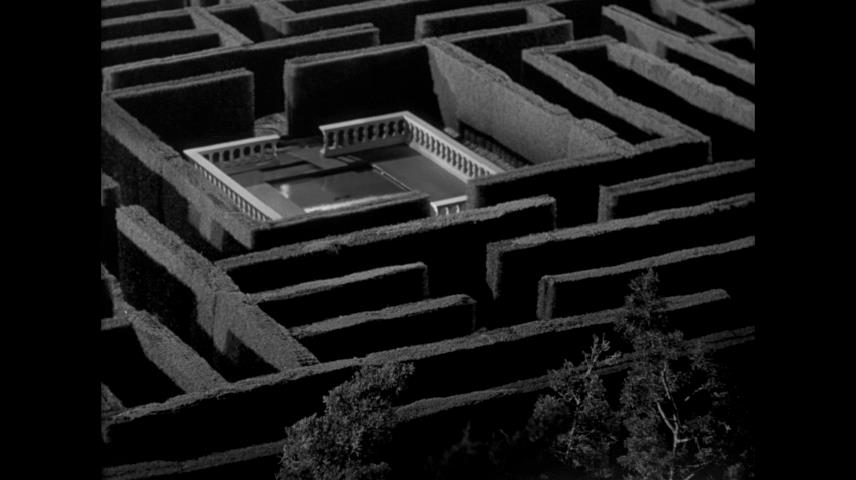
Based on a previously-written story but with a number of changes, it finds happy couple Kitty (Veronica Hurst) and Gerald (Richard Carlson, who also appeared in two other 3-D movies of the era, It Came From Outer Space and Creature From the Black Lagoon both of which are also available on 3-D Blu-Ray) celebrating their engagement with family- but Gerald is soon called away when he receives news that his uncle, caretaker of ancient Craven Castle in Scotland, has just died and he must go there right away. He then isn't heard from for a while until finally sending Kitty a letter breaking off the engagement and telling her to just get on with her life without him. Kitty is a rather skeptical character however and doesn't give up that easily- instead she shows up at the castle unannounced with her aunt Edith (Katherine Emery) demanding to know just what is going on. They find Gerald appearing to have aged greatly since they last saw him just a few weeks ago, and he isn't exactly thrilled to see them. He allows them to stay there for the night but insists they must leave the next morning. The castle hasn't had much work done on it in over two hundred years, not even having electricity installed and lit by candles instead. A literal maze of hedges that has at least been well maintained is outside of the castle, with a gate warning outsiders not to enter it.
Kitty doesn't sleep much that night but instead does a bit of detective work. She finds a hidden stairway filled with cobwebs and bats- a sequence that looks great in 3-D even though the bats themselves aren't achieved through the most convincing effects. She finds a window at the top of the stairs that lets her look down onto the maze below, and sees signs of something odd going on in the middle of the night. She also hears strange sounds in the hallways outside the bedroom door. When morning comes she's convinced to get to the bottom of all of this and not let her husband be consumed by it. She gets her aunt to fake illness in order to stay for a few more days, and continues to snoop around for clues. There's no phones anywhere, but she manages to send a letter to her friends back home, one of whom is a doctor, asking them to drop by for a social call but also to secretly figure out exactly what is going on here.
Promotional materials for the movie stated "PLEASE do not reveal the amazing climax to your friends!" Well, that sort of gives away the fact that there is a climax to all of this by the end, and without spoiling things I found it rather silly but about par for 1950s films. While not scary, let along terrifying, the movie nevertheless holds one's interest mostly by Hurst's performance. She's a bit stronger than the stereotypical female characters of the era, not letting things go easily but still acting a bit non-confrontational. A more modern film would likely have her yelling and slapping Gerald's face demanding to know just what the hell is going on, but here she just pleads with him and tells others she only wants to "help" him more than find herself single again.
Disappointingly, not a whole lot of the movie takes place in the actual maze itself- the overhead views of it are obviously a model, and the noticeably low budget didn't allow for much of a real maze for the cast to wander through. The 3-D is absolutely essential here- despite not having many obvious "gimmick" shots, the depth throughout is very strong, with most shots appearing to have been set up with 3-D in mind. Those who complain that 3-D gives them headaches may find this hard to watch however, as the presentation forces you many times to focus on either the actors in the foreground, or on the background looking at the details there. To me that's the way all 3-D should be, a far cry from the barely-there depth of more recent movies achieved with post-conversion rather than shot with two real images. The 3-D does make the fakeness of the castle really being a soundstage all the more obvious- I've also thought it rather strange that many 3-D movies of this era were shot in black and white, but in this case that just helps the atmosphere. (Man in the Dark is another good use of 3-D in black and white.)
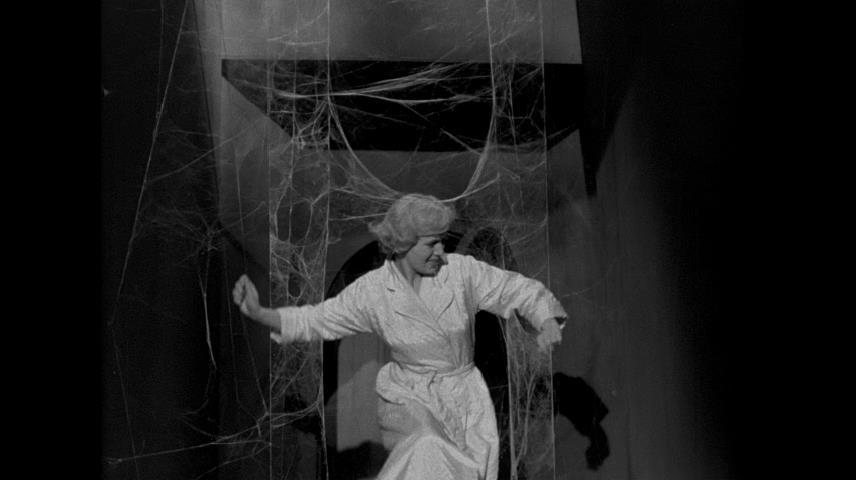
3-D Film Archive's previous titles have been incredible in that the materials they had to work with were in rather poor condition, yet they were still able to make them look nearly pristine with limited funds and resources. It isn't as clear as to what condition the elements for this title were in (the disc has no before/after comparison as their last few did) but it seems they had an easier time with it. Martin Scorsese's non-profit Film Foundation helped with this as well, as Scorsese had seen The Maze in theaters as a kid and was excited at the prospect of a 3-D restoration. (It would be nice if he also had some pull with the electronics manufacturers and could urge them not to abandon 3-D capable displays.)
As usual, the results here are very clean, except for a minor scratch in some moments on the left eye view. (While my view on this may be a bit controversial, I would rather see such things left in than have excessive clean-up alter a movie's intended look.) The film grain appears rather suppressed and I was almost certain that digital noise reduction was being used, but Bob Furmanek (in his comments below) says that they never use noise reduction. As with 3-D Film Archive's other restorations, the alignment of the left and right images has been tweaked so that they remain consistent from shot to shot- many 3-D films of this era ended up having one eye appear higher than the other resulting in some of the aforementioned headaches from moviegoers. The disc includes a 2-D viewing option as well, showing just the left eye view and is certainly watchable, but once you've seen this in 3-D the loss of that takes quite a bit away from the movie, as would taking the color out of a very colorful film. It's certainly a shame that none of the current TVs on the market will be able to display this properly- but if you have a 3-D display this title should be in your collection.
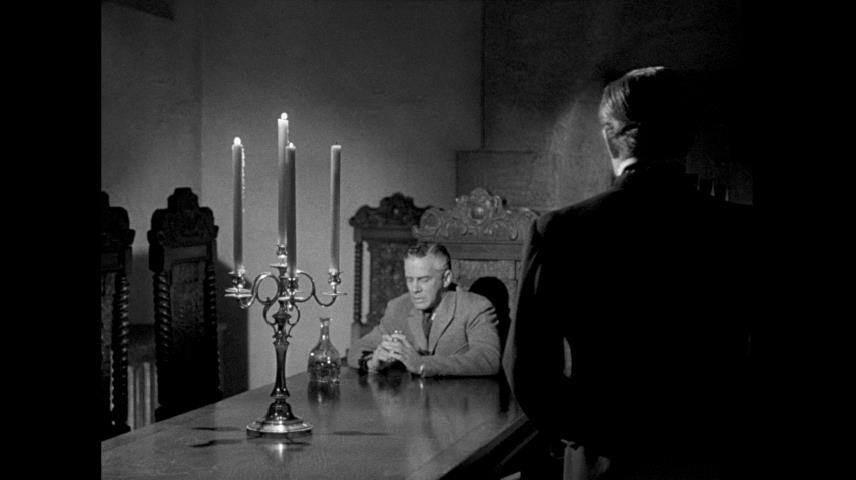
In the early days of multi-channel film soundtracks, these were achieved by a separate reel of 35mm film coated entirely as a magnetic tape and run through an audio playback unit synched with the projectors. This track has since been lost, but as with Those Redheads From Seattle sound engineer Eckhard Buttner has re-created the track as it at least likely sounded. It's a 3-channel configuration with only the front channels present (I found that with my Marantz receiver's default settings for playing most tracks properly, it actually decodes surround channels from the front left and right- for such mixes a silent rear channel ought to be encoded to keep this from happening.) Composer Marlin Skiles' score fills the soundstage, with left and right panning of off-screen voices and sound effects, a few of which are rather startling. I noticed some slight noise, typical of sound tracks of this vintage, in the center channel but the left and right were clean at the same time. The untouched mono optical track, played by theaters without with the stereo equipment, is also included.
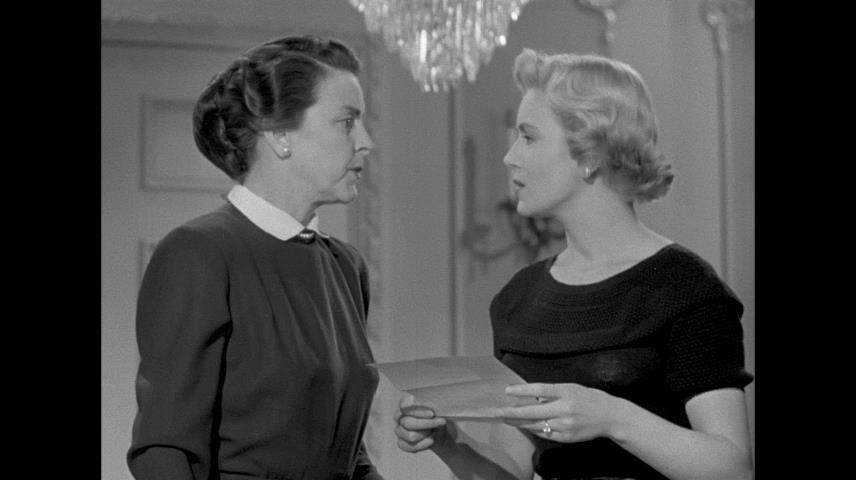
A commentary track with several participants is included, primarily with film historian Tom Weaver who gives a wealth of information including details of the original story and the changes made for the movie. David Schecter cuts in for a few minutes to talk about the music score, Bob Furmanek to talk about the 3-D aspects and restoration, and Dr. Robert J. Kiss who gives a rather impressive account of its initial theatrical release- it was quite successful.
Veronica Hurst appears onscreen for a few minutes in recently-shot footage discussing her memories of shooting this movie, and the theatrical trailer is included in 3-D where Richard Carlson appears on the set out of character. (This trailer is also on the 3-D Rarities disc.)
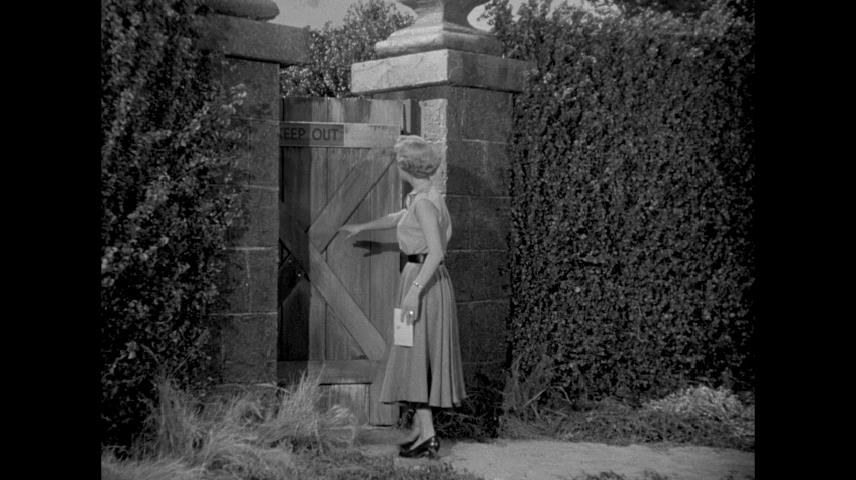
As a movie, The Maze didn't quite live to what I'd been expecting from it for over 35 years prior to finally getting to see it, and I'm not alone in finding parts of it unintentionally funny. Still this isn't an awful movie by any means, and the use of 3-D here is remarkable in that it doesn't hit you over the head with gimmicks yet still provides a far different experience than the 2-D version. I applaud Bob Furmanek and company for continuing to produce quality presentations of vintage 3-D movies (their next release is said to be Paramount's Sangaree) and keep hoping that we'll have displays available to view these on well into the future.
Jesse Skeen is a life-long obsessive media collector (with an unhealthy preoccupation with obsolete and failed formats) and former theater film projectionist. He enjoys watching movies and strives for presenting them perfectly, but lacks the talent to make his own.
|
| Popular Reviews |
| Sponsored Links |
|
|
| Sponsored Links |
|
|
| Release List | Reviews | Shop | Newsletter | Forum | DVD Giveaways | Blu-Ray | Advertise |
|
Copyright 2024 DVDTalk.com All Rights Reserved. Legal Info, Privacy Policy, Terms of Use,
Manage Preferences,
Your Privacy Choices | |||||||













